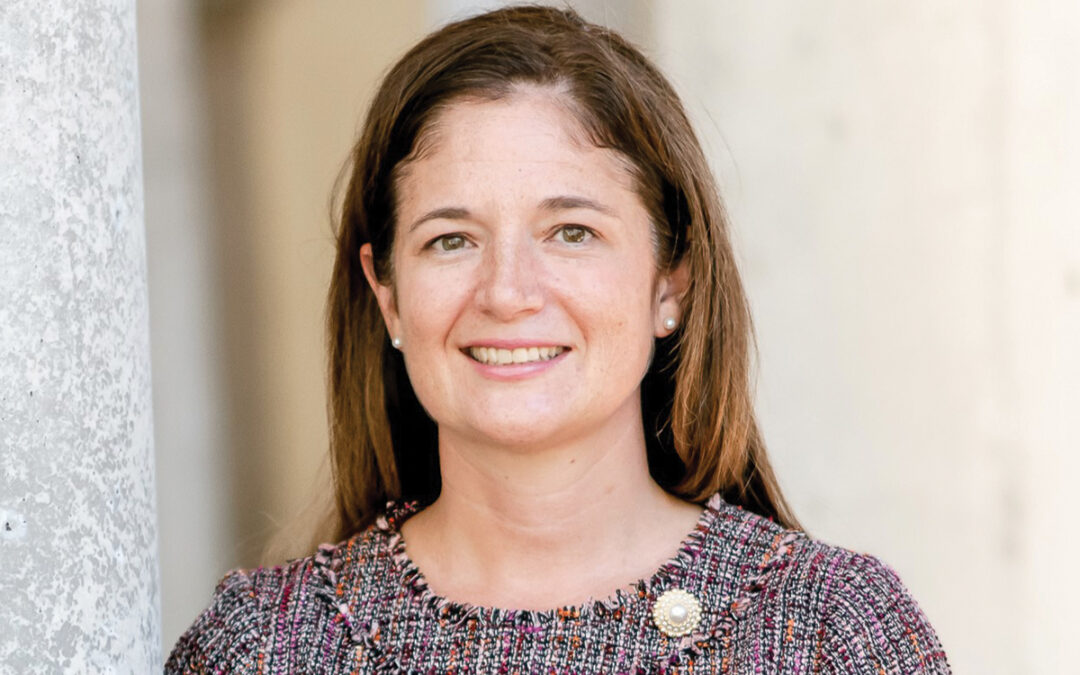Since the 1960s, we’ve been brought up to believe we have complete control of our procreative powers. Conception can be blocked for years with various drugs, behaviors and accoutrements. What a shock it is when you take away the barriers only to find all systems are not go.
The problem? Infertility is the culprit in many cases. If you’ve experienced some challenges in this area, you’re not alone. According to WebMD, infertility problems are diagnosed in one in 10 American couples.
The medical definition of infertility is a couple’s inability to become pregnant after one year of sex without using birth control. On the bright side, out of all couples who have not conceived after one year, about half will go on to conceive naturally in the following year. However, older women may not have two years to spare.”
For women over 35, there is a more acute need to diagnose the clinical problem causing the infertility within a reasonable, rational time,” says Dr. Joseph Garza, a 21-year veteran in the fertility field and medical director of the Institute for Women’s Health in San Antonio.
What’s so magical about age 35? A woman’s fertility declines from her mid-30s into her 40s, as her egg supply ages. At the same time, her risk of miscarriage increases. According to figures from the Mayo Clinic, peak fertility occurs between ages 20 and 30. Fertility drops 20 percent after age 30, 50 percent after age 35 and 95 percent after age 40. While 72 percent of 28-year-old women get pregnant after trying for a year, only 24 percent of 38-year-olds do.
Throughout his 16 years as a fertility specialist, Dr. Joe Martin of the Fertility Center of San Antonio has found many women are unaware how big a factor age is. “At 35, you feel pretty good. It’s hard to relate that feeling of health and vigor to a decreasing number of eggs with diminishing potential,” he says.
“The urgency of diagnoses also stems from an increased risk of genetic anomalies that cause conditions like Down syndrome,” says Dr. Garza. When these problems occur, miscarriage can result. Add this to the list of reasons to seek testing and treatment sooner rather than later if you are 35 or older.
Causes of infertility
Problems with the man’s sperm production or quality and problems with the woman’s reproductive tract are about equally common. Some conditions are hormonal in nature, and others involve structural problems in the reproductive organs that require surgical repair. Experts agree there are a number of common causes, including:
Ovulation problems or abnormal egg production
Endometriosis – a disease causing scarring of the fallopian tubes and ovaries
Blockage of fallopian tubes
Male factor (low sperm count,motility problems, etc.)
Hormonal factors and weightAbout 15 percent of infertile couples are affected by abnormal egg production, according to WebMD. In 10 percent of infertile couples, no cause is found despite thorough testing.
Infertility treatments
Treatment ranges from simple lifestyle adjustments, such as vitamin C therapy and boxer shorts for male factors, to specialized surgical fixes like laparoscopic laser surgery to clear scar tissue caused by endometriosis.
Addressing hormonal irregularities, such as thyroid problems and polycystic ovarian syndrome (PCOS), has become a major focus for Linda Ellsworth, M.D. and Ph.D. A long-time fertility specialist, she co-developed the pioneering gamete intrafallopian transfer (GIFT) procedure and performed the first in vitro fertilization (IVF) in San Antonio. She also delived the infant that resulted.
For more than 17 years in private practice, Dr. Ellsworth has witnessed the increased difficulty her patients have in getting pregnant when they’re outside their ideal weight range, whether high or low. Many of her patients have PCOS, with typically irregular menstrual cycles and high levels of male hormones that result in excess dark body hair. Several years ago it became evident that PCOS was associated with glucose intolerance and an increased risk of diabetes. Soon after that, research demonstrated an improved rate of ovulation and conception with the use of medications used to treat diabetes. Dr. Ellsworth was one of the first to adopt the research protocols for her patients. “The results were even more promising than I expected,” says Dr. Ellsworth. Menstrual periods became more regular, and some patients even conceived without requiring additional fertility medications, which often have side effects. “As a result, many patients conceived sooner and with less trouble and expense than they would have with traditional methods,” she explains.
Assisted reproductive technology (ART) treatments include several different medical procedures that help a woman become pregnant:
In vitro fertilization (IVF) – Eggs and sperm are brought together in a laboratory dish to allow the sperm to fertilize the eggs. The fertilized eggs (zygotes) are then transferred to the woman’s uterus.
Gamete intrafallopian transfer (GIFT) – Eggs are collected from the ovaries, then placed in a thin, flexible tube with the sperm. They are then injected into the woman’s fallopian tubes, where fertilization takes place.
Zygote intrafallopian transfer (ZIFT) – Eggs and sperm are mixed outside of the body. The fertilized eggs (zygotes) are then returned to the fallopian tubes, through which they travel to the uterus.
Intracytoplasmic sperm injection (ICSI) – This begins with the injection of a single sperm into an egg. The fertilized egg is then placed in the woman’s uterus or fallopian tube. Used with in vitro fertilization, ICSI is often a successful treatment for men with impaired sperm.
Getting help
If you’re concerned for any reason about your ability to conceive, make an appointment with a medical doctor for an evaluation as soon as possible — especially if you:
Are over the age of 35
Have irregular cycles
Experience painful menstrual periods
Have suffered several pregnancy losses
Have used an intrauterine device (IUD)
Have had a pelvic infection or abdominal surgery
If your infertility is suspected or even confirmed, there are still a number of things you can do. First, inform yourself by reading and asking questions. Join a patient support and information group either in person or online. Dr. Garza recommends getting a second or third opinion. “Be a critical student of your problem,” he advises. “When hearing of some great new product, look for randomized, double-blind, prospective clinical studies reported by several different clinics.” These types of studies ensure results are repeatable and not influenced by the placebo effect or researchers with selective memories.
Robert Schenken, M.D., professor and chair of the obstetrics/gynecology department at the University of Texas Health Science Center at San Antonio, recommends couples facing infertility see a specialist board certified in reproductive endocrinology and infertility (REI).
How does a gynecologist differ from a reproductive endocrinologist? After graduating from medical school, a physician completes a four-year residency to become an obstetrician/gynecologist. The average amount of time spent in fertility training out of that four years is eight to 12 weeks in reproductive endocrinology. Some programs have greater focus on fertility care, but basic training often has less, and that training is mostly observational.
Now if an OB/GYN goes into reproductive endocrinology, he or she spends three more years in a fellowship — and at least 18 to 24 months in clinical training. The difference amounts to three months versus 27 months of training. To be certified in obstetrics and gynecology, one must take a written exam and sit for an oral exam two years later. All reproductive endocrinologists must be certified in OB/GYN before sitting for their subspecialty certification. The final step is another written test with an oral exam two years later. There are roughly 900 to 1,000 board-certified reproductive endocrinologists in the country.
Many physicians and couples who have experienced the fertility-treatment roller coaster will tell you to discuss your financial and emotional limits ahead of time. Dr. Martin often runs into patients who think solving the infertility puzzle won’t require much effort on their part. “Many times they’re not mentally prepared to accept the fact that they’re infertile and may have a difficult time getting pregnant,” he says. “Sometimes it’s hard for them to accept the things they have to do.”
Protect your fertility
Avoid using tobacco and marijuana, which have been found to reduce fertility, especially by reducing sperm counts.
Avoid exposure to chemicals.
Avoid excessive alcohol use, which may damage eggs or sperm.
Limit sex partners and use condoms to reduce the risk of getting a sexually transmitted disease (STD). STDs that go undetected and untreated can damage the reproductive system and cause infertility.
Reduce the possibility of hormone imbalances by maintaining the ideal body weight associated with your height.
Resources
RESOLVE: The National Infertility Association is a nonprofit organization that has been providing education, advocacy and support since 1974. It also features a “just for men” area on the site. www.resolve.org
South Texas Chapter: www.resolveofsouthtexas.org, (210) 967-6771
CDC’s Reproductive Health Information Source contains research summaries, publications and general information about assisted reproductive technologies, safe motherhood and women’s reproductive health.
Also available is an annual publication on pregnancy success rates for assisted reproductive technology (ART) clinics. This report includes a comprehensive listing of fertility clinics, help with interpreting success rates, frequently asked questions about ART and a glossary of terms related to infertility treatment.
Author: Paula Allen









0 Comments